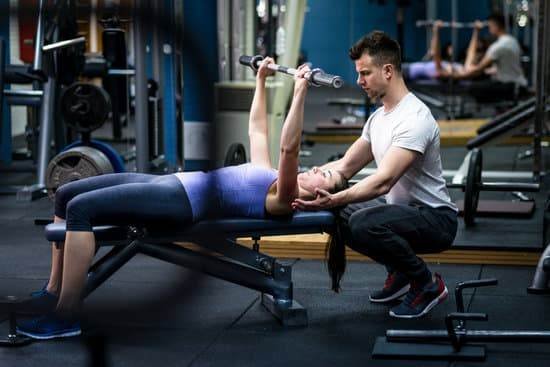Arranging educational courses
In Alberta, there are several different paths to become a qualified personal trainer. Each one requires that the applicant has completed specific educational courses to demonstrate their knowledge and skills of the field. One of the most important decisions an individual needs to make is how to arrange these educational courses in order to successfully obtain certification as a personal trainer.
For those that do not have the time or money for an in-person course, there are a variety of online resources available for studying for exams and becoming certified. All online programs must have approval from the provincial regulator (in this case Alberta). Additionally, some people may choose self-guided courses, which involves setting one’s own study schedule, but requires proof of completion from an accredited institution to ensure quality standards are being met.
A more common route is taking in-person classes offered by post- secondary institutions or other private organizations that specialize in training personal trainers in Alberta. These classes will vary based on the school or organization offering them and topics discussed could include anatomy, nutrition, assessment techniques, and program design. Scheduling will also play a role as students must be sure they are able to allot enough hours each week or month dedicated to attendance and study sessions necessary for certification.
Setting Up a Space
To set up a space for personal training in Alberta, there are some key requirements to consider.
Firstly, you will need to register your business with the appropriate government agency and acquire proper insurance coverage. It is illegal to operate a business in Alberta without the necessary insurance in place. You may be required to provide proof of liability insurance and workers compensation insurance depending on your status as an independent contractor or employee.
Next, you need to develop your professional training space. Depending on the type of services you will be offering and any certifications or qualifications that you possess, there are certain pieces of equipment that will be necessary for running a successful personal training business. Depending on the focus of your program and client demographic this can range from simple items such as yoga mats and jump ropes, to more comprehensive options such as weights and stability balls. Keeping track of what equipment is necessary for each client will help cut down on unnecessary clutter and ensure safety during each session that you offer.
Finally, depending on what part of Alberta you will be operating out of it is good practice to familiarize yourself with local bylaws regarding businesses located within residential areas as these may impact what types of services (if any) can be offered outside of a commercial gym setting.
Developing Specialties
Specializing as a personal trainer can often be beneficial in helping you stand out among the competition. There are many different specialties that can be explored, including working with specific demographics such as seniors, children, or athletes. Additionally, specialized training techniques can be used in order to more effectively target certain muscle groups or improve overall athletic performance.
In order to become certified in a particular area such as senior fitness or sports conditioning, special courses and workshops may need to be completed and an official certification from the relevant governing organization may need to be obtained. It is also important for personal trainers who wish to specialize in any particular area to continually update their knowledge about health and fitness trends so that they can stay ahead of the competition. Furthermore, working on a regular ongoing basis with clients from any given specialty you’ve chosen will help you build up experience, allowing you to become an expert in whatever topic you decide to specialize in.
Connecting with Clients
One of the most important aspects of becoming a successful personal trainer in Alberta is being able to create strong relationships with your clients. Personal training is much more than just offering up fitness instructions and advice. Having a personal relationship with your client allows them to trust you, be motivated by you and feel safe under your instruction. Here are some suggestions for effectively connecting with your clients:
1. Get to know them on personal level – Learn about their interests, hobbies, family life and anything that shows an interest in how they live their life.
2. Motivate them – Show genuine enthusiasm and spirit when instructing and motivate them to work harder during every session
3. Listen to their needs – Despite having a rigid plan, ensure that everyone has different needs so make sure you adjust instructions accordingly while still remaining under your defined goal
4. Create a welcoming atmosphere – Clients need to feel safe and welcomed, therefore create an inviting environment both mentally and physically; this way they’ll come back time-after-time!
Networking Opportunities
Networking opportunities are essential for personal trainers in Alberta, as they provide a way to grow the trainer’s network, build relationships with other like-minded individuals in the field, and allow them to share their knowledge and advice with one another.
Local personal training associations are excellent networking resources, as they can offer access to workshops, seminars, and conferences hosted by experts in the industry. These events offer a unique opportunity for trainers to hone their skills as well as establish connections with potential employers and current clients. Additionally, members of these associations may have access to special discounts for products or services related to being a personal trainer, so it is important for trainers to take advantage of these privileges.
Social media platforms such as Facebook, Instagram, Twitter, or LinkedIn are also great places for personal trainers in Alberta to network. Through social media, trainers can post updates on their services or upcoming events that they’re hosting while easily connecting with others interested in similar subjects. Additionally, more general online communities like Reddit or Quora offer an ideal platform for new trainers to share ideas, get feedback from experienced trainers within the province, ask questions and get support from those already working within this profession.
Ultimately networking is an essential part of success for any personal trainer; it allows them to stay up-to-date on advancements within the field while also creating a community where meaningful professional relationships can be formed.
Assessing Progress
To become a personal trainer in Alberta, there are certain steps that must be taken. The first is to obtain certification. The certification will certify you as a personal trainer, and is considered the entry-level requirement for working with clients. You can obtain a certificate or diploma in fitness from a college or other educational institution.
Once you have completed your training, the next step is to get certified with the appropriate body in your city or province. Alberta has several options for certification – the Canadian Society for Exercise Physiology (CSEP), the National Academy of Sports Medicine (NASM) Certification and the Canadian Fitness Association (CFA). Each of these options offer courses and exams, which must be passed in order to become certified with them.
Next, you need to register as an individual contractor with Alberta’s Workers’ Compensation Board (WCB). This allows you to conduct business under your own name, while ensuring you are protected financially if any occurrences were to happen while training your clients. Additionally, it also helps keep client information secure and confidential, per the WCB regulations.
Lastly, once everything is settled and arranged up until this point; you may want to consider investing in insurance coverage which will protect both yourself and your clients should injury occur as a result of any exercises undertaken while they are working with you. Insurance covers such issues as bodily injury liability, medical payments if needed due to injury protection due to negligence and operational liabilities protection such as professional advice liabilityl.
In addition to these steps in becoming a personal trainer in Alberta; it is important for trainers to keep up-to-date on scientific research into exercise physiology so that their knowledge supports the variety of goals that their clients have set out for themselvesor modify safe approaches when necessary along case progression . Further support includes providing tips on how to assess and monitor their progress throughout their duration working together; setting realistic goals; encouraging self-motivation through tracking progress both objectively as well as subjectively done through consultation/reviewing sessions together; developing positive habits including eating healthy meals most days of the week; introducing practices such as mediation activities for stress relief ;as well creating programs tailored uniquely according the client’s present lifestyle requirements without overtaxing their patience or ability levels.. In doing so a personal trainer plays an integral role in helping promote health equity among participants by taking various influential factors into account rather than promoting one size fits all exercises or diet plans available online

Passionate about providing useful information to anyone with an interest in the field of Personal Training, I strive to pass on to our readers quality information and to answer any questions about Personal Trainers, the work they do and how to become one.





